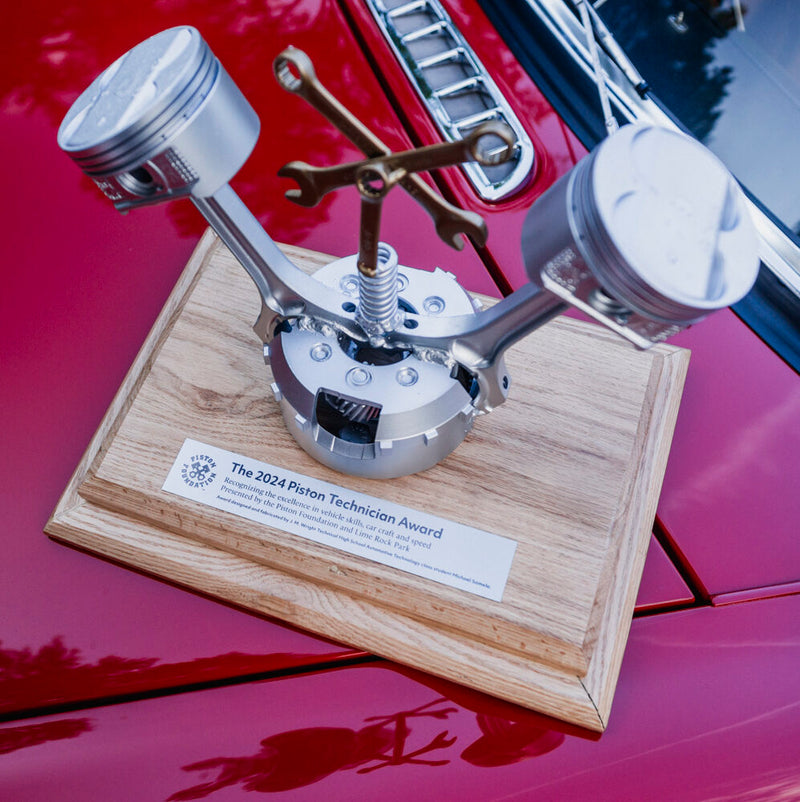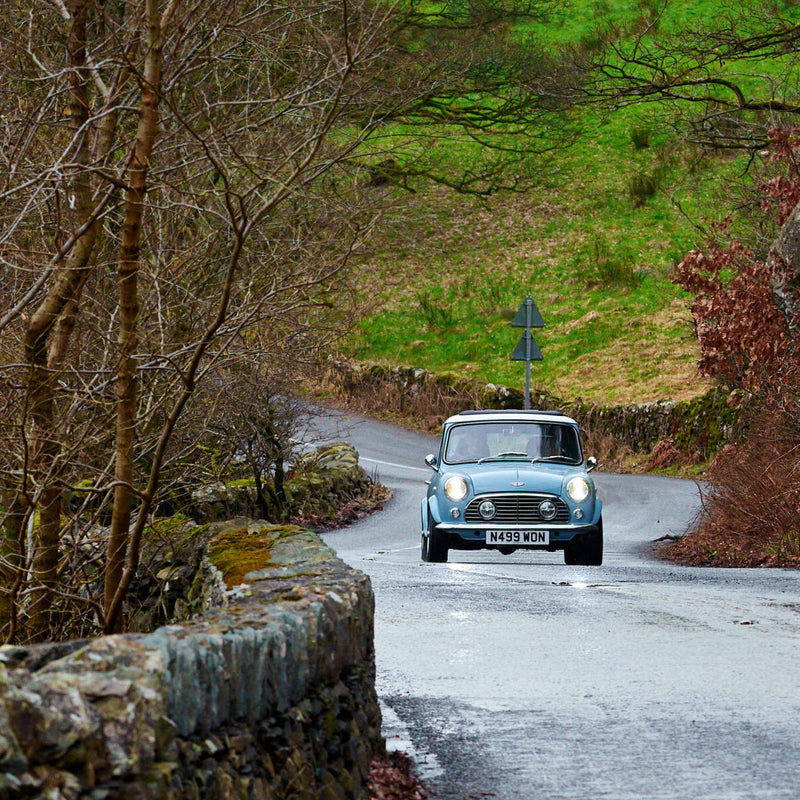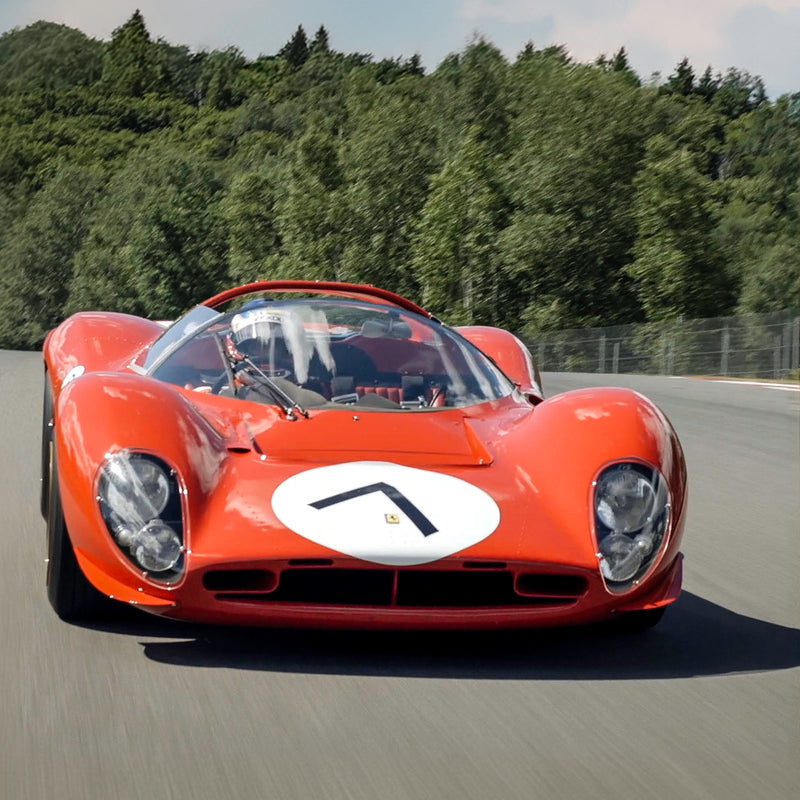An evolution of the Lotus Six (Colin Chapman’s first design not sprung from an Austin Seven base), the 1957 Lotus Seven ranks highly amongst the man’s designs, and he had quite a catalog to his name. The story of this car endured for so long because it represents the fundamentals of Lotus, and of many a race car: it’s totally dedicated to his philosophy of simplicity, lightness, and purpose. Although it now boasts over 60 years of production and has become an inspiration for generations of cult enthusiasts, the “Seven” story may have halted in the 1970s if it had not been for one very enthusiastic Lotus dealership: Caterham Car Sales. To experience the timeline in a practical sense, I had the chance to jump into the first Seven before some seat time in one of the recent products from Caterham to see how the legend is living on in the modern age.




The original Lotus Seven is a truly simple machine. Akin to something that has been built in someone’s shed (it most likely was), its original purpose was be a simple and inexpensive car that could be used for racing and as a day to day mode of transport if need be. To reduce costs and avoid new car purchase taxes at the time, the first series was offered as a kit car to be assembled by customers at home who would have to follow the included disassembly instructions in reverse. This massive model kit system allowed the cars to avoid taxes altogether.
Inside, things aren’t that much better in the sense that it’s as basic as can be. Stepping over the doorless body into the super low and tight interior, sharp edges abound around the thin leather-clad steering wheel, a few gauges (no fuel gauge), a cushion for the seats, a gearstick, and three pedals. Placing my foot on the clutch, I find the steering column placed inconveniently close, and am intrigued by the thought of anyone taller than me physically fitting into this car.






However, after negotiating its industrial gearbox and getting on the road, I begin to understand why the Seven became so popular with clubman racers and enthusiasts alike. With only 37bhp coming from its 948cc BMC A-Series engine, everything is about the handling and the raw connection established between the mechanical components and the road. Featuring a tubular chassis—that took inspiration from Lotus’ racing roots—corners can be taken with extreme precision despite the steering requiring constant attention. It becomes obvious very quickly that the first series of these cars can be incredibly fun once you’ve put in the time to learn how to drive one properly; there’s not much experience to fall back on here unless you’ve had some time in karts.
But why, with all its success, did Chapman look to stop the Seven’s production? With his attention focused on the success of the Lotus Formula 1 team and a new collection of sports cars to be released like the Elan and later the Esprit, Chapman saw it fit to finally discontinue the Lotus Seven in 1973, a car that received four updates since its initial release.



Luckily for us, Graham Nearne (proprietor of the first “Lotus Centre,” Caterham Car Sales) was passionate and convinced that the Seven would continue to be popular, resulting in Caterham purchasing the rights to the design of the Seven, which they’ve continually developed and put into various specifications ever since.









In 2016, Caterham released a new spec for the Seven called the Sprint. Aimed to be significantly less extreme than the clubman and performance-driven variants such as the Superlight R500 that was also present during the day, its focus was to introduce a new variation on the Seven theme. Taking retro styling cues and a more relaxed approach to the Seven experience, it’s a very comfortable yet rewarding driver’s car that bears many similarities to the Lotus original.








Since it sits more on the everyday driver side of things rather than a pure track tool, the Sprint features some very welcome adjustments for comfort and usability, such as a more comfortable and ergonomic pedal configuration, a wider footwell, additional trimming, and a few more gauges and buttons. However, like the original, the Sprint is still more about the experience and accessible fun than practicality, and its 79bhp, three-cylinder, turbocharged engine offers plenty of thrust for this feather. While the modern Caterham versions like the rigid Superlight R500 demand your full attention at all times, the Sprint is far softer and perfectly suited to a spirited weekend drive in the countryside.

Evolution has always been a key part of the Seven’s success, whichever badge it wears. From its years as a Lotus to over 45 years now as a Caterham, the Seven legend has lived on because of the dedication of each variant to Chapman’s philosophies set forth in the original. With some of the most recent evolutions like the Sprint and now Supersprint looking to showcase a new side of the Seven (The Sprint’s 60 examples sold within a week), it’s a clear indication that Caterham’s commitment to building with simplicity, lightness, and purpose is still at the core of every model. It’s a business model that will ensure that the legacy of the Seven will continue to inspire and captivate enthusiasts for generations to come; an antidote to the modern, muddied sports car if there ever was one.




















































